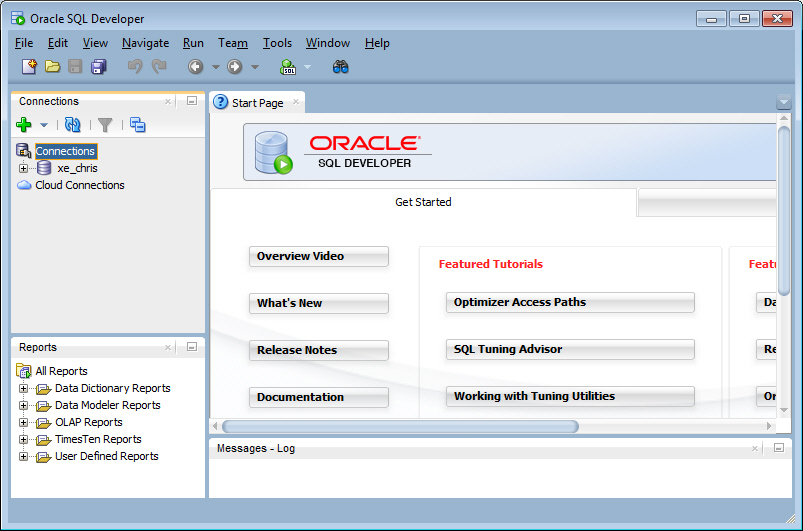- Oracle Database Express Edition 11g Release 2 For Macos
- Oracle Database Express Edition 11g Release 2 For Mac Catalina
- Oracle Database Express Edition 11g Release 2 For Mac Osx
- Oracle Database Express Edition 11g Release 2 For Macs
By default, the ability to interact with network services is disabled in Oracle Database 11g Release 2 or later. Therefore, if you are running Application Express with Oracle Database 11g Release 2 or later, you must use the new DBMSNETWORKACLADMIN package to grant connect privileges to any host for the APEX200200 database user. Oracle Database 11g Express Edition (Oracle Database XE) is an entry-level, small-footprint database based on the Oracle Database 11g Release 2 code base. Oracle Database 11g Express Edition (Oracle Database XE) is. Fast to download and simple. 2 Oracle 11g R2 Database Release 2 only support Windows, Linux, and Solaris. So if you want to using Oracle 11g R2 on a Mac OS you will need to using something like Virtual Box or VMware Fusion. You can read more about installing Oracle 11g R2 on these operating system here.
How To Install Oracle 11g Express Edition Release 2. Manish Sharma - December 24, 2018. Manish Sharma, a recipient of the ORACLE ACE Award, is an Oracle database trainer & consultant. He has an extremely successful YouTube channel named Rebellion Rider. It is one of the top. If you're running a 32-bit version of Windows, choose the 'Oracle Database Express Edition 11g Release 2 for Windows x32' file. If you're running Linux, then choose the 'Oracle Database Express Edition 11g Release 2 for Linux x64' file.
I am going to demonstrate how to install Oracle 11gR2 Express Edition in Ubuntu 13.04. Take note that Ubuntu is not supported by Oracle but I will still attempt to install the platform. I used the following source as basis for my installation:
http://meandmyubuntulinux.blogspot.com/2012/05/installing-oracle-11g-r2-express.html
http://meandmyubuntulinux.blogspot.com/2011/09/installing-1-gb-swap-without.html
Make sure you download Oracle11g Release 2 Express Edition x64 (The only available cpu architecture for XE edition) and placing it in a directory that you can work on before proceeding further:
Installation prerequisites:
1. Install the needed packages:
shell> sudo apt-get install alien libaio1 unixodbc vim
2. While downloading the packages, you can also unzip the Oracle database file you’ve just downloaded earlier as both will take some time:
shell> unzip oracle-xe-11.2.0-1.0.x86_64.rpm.zip
3. Next, we need to convert the .rpm file to .deb file with the following command:
shell> sudo alien –scripts -d oracle-xe-11.2.0-1.0.x86_64.rpm
While doing this step, you may proceed to the next step at this may take time:
Pre-installation configuration
1. We will create a special chkconfig script in this step.The Red Hat based installer of Oracle XE 11gR2 relies on /sbin/chkconfig, which is not used in Ubuntu. The chkconfig package available for the current version of Ubuntu produces errors and my not be safe to use. Based on the source I followed, below is a simple trick to get around the problem and install Oracle XE successfully:
(copy and paste the following into the file )

Oracle Database Express Edition 11g Release 2 For Macos
Oracle Database Express Edition 11g Release 2 For Mac Catalina
a) switch to root and perform the following commands:
shell> su root
Oracle Database Express Edition 11g Release 2 For Mac Osx
Just in case you want to revert to the original config, perform the following:
shell> sudo swapoff -a
shell> sudo rm /swapfile
Oracle Database Express Edition 11g Release 2 For Macs
shell> sudo cp /etc/fstab /etc/fstab.changed; sudo cp /etc/fstab.org /etc/fstab
shell> sudo swapon -a; swapon -s
End of Swapfile Notes**
shell> sudo dpkg –install oracle-xe_11.2.0-2_amd64.deb
- A valid HTTP port for the Oracle Application Express (the default is 8080)
- A valid port for the Oracle database listener (the default is 1521)
- A password for the SYS and SYSTEM administrative user accounts
- Confirm password for SYS and SYSTEM administrative user accounts
- Whether you want the database to start automatically when the computer starts (next reboot).
Note: I pretty much used the default configuration here except for the password of course
IMPORTANT: If the previous step or the configuration fails to complete, then you may have encountered the problem in which the link above was created for. The author explained in the link above the reason for the failure. Nevertheless, you will need to reinstall the package again. This happened to me. I followed the troubleshooting guide created by the author and everything went well afterwards.
2. We need to set up the environment variables to ensure the database will run. Add the following env variables to the .bashrc:
shell> vi ~/.bashrc
shell> export ORACLE_HOME=/u01/app/oracle/product/11.2.0/xe
shell> export ORACLE_SID=XE
shell> export NLS_LANG=`$ORACLE_HOME/bin/nls_lang.sh`
shell> export ORACLE_BASE=/u01/app/oracle
shell> export LD_LIBRARY_PATH=$ORACLE_HOME/lib:$LD_LIBRARY_PATH
shell> export PATH=$ORACLE_HOME/bin:$PATH
3. Load the changes:
shell> . ./.profile (from root or just type cd before this command)
shell> sudo service oracle-xe start (mine is running already)
Configuring User Accounts in Oracle 11gR2 XE
1. Login in the database as follows:
shell> sqlplus / as sysdba
Note: If you get the error ORA-01031: insufficient privileges after the above command, it means you need to add your user in the dba group. Perform the following:
shell> su root
shell> vim /etc/group
Add your user name at the end of dba:x:1001: like
dba:x:1001:<user>
2. Create a user account using the following commands:
sqlplus> create user <username> identified by <password>;
sqlplus> grant connect, resource to <username>;
3. Now try logging in to that user account using the username you’ve just created:
shell> sqlplus
Enter username:
Enter password: